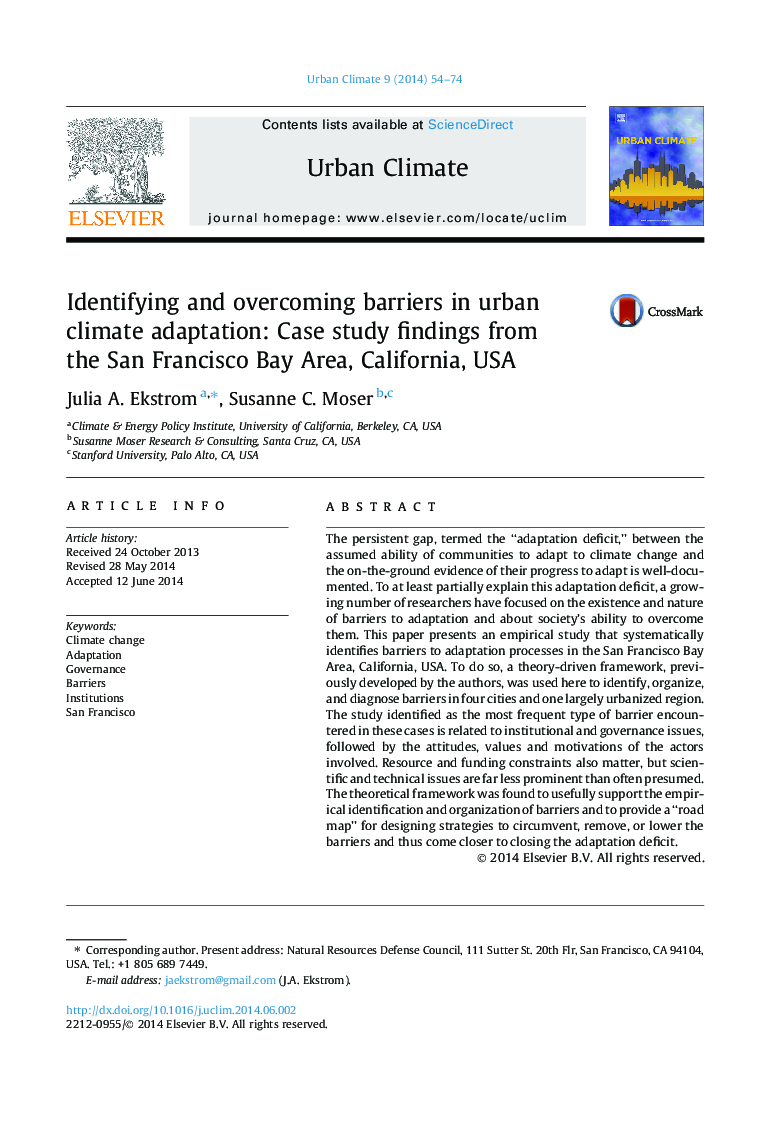| Article ID | Journal | Published Year | Pages | File Type |
|---|---|---|---|---|
| 143762 | Urban Climate | 2014 | 21 Pages |
•The institutional and governance type of barriers appeared the most frequently.•The previously published framework was useful to identify and diagnose barriers.•Many strategies in early climate adaptation efforts are to reduce barriers.
The persistent gap, termed the “adaptation deficit,” between the assumed ability of communities to adapt to climate change and the on-the-ground evidence of their progress to adapt is well-documented. To at least partially explain this adaptation deficit, a growing number of researchers have focused on the existence and nature of barriers to adaptation and about society’s ability to overcome them. This paper presents an empirical study that systematically identifies barriers to adaptation processes in the San Francisco Bay Area, California, USA. To do so, a theory-driven framework, previously developed by the authors, was used here to identify, organize, and diagnose barriers in four cities and one largely urbanized region. The study identified as the most frequent type of barrier encountered in these cases is related to institutional and governance issues, followed by the attitudes, values and motivations of the actors involved. Resource and funding constraints also matter, but scientific and technical issues are far less prominent than often presumed. The theoretical framework was found to usefully support the empirical identification and organization of barriers and to provide a “road map” for designing strategies to circumvent, remove, or lower the barriers and thus come closer to closing the adaptation deficit.
